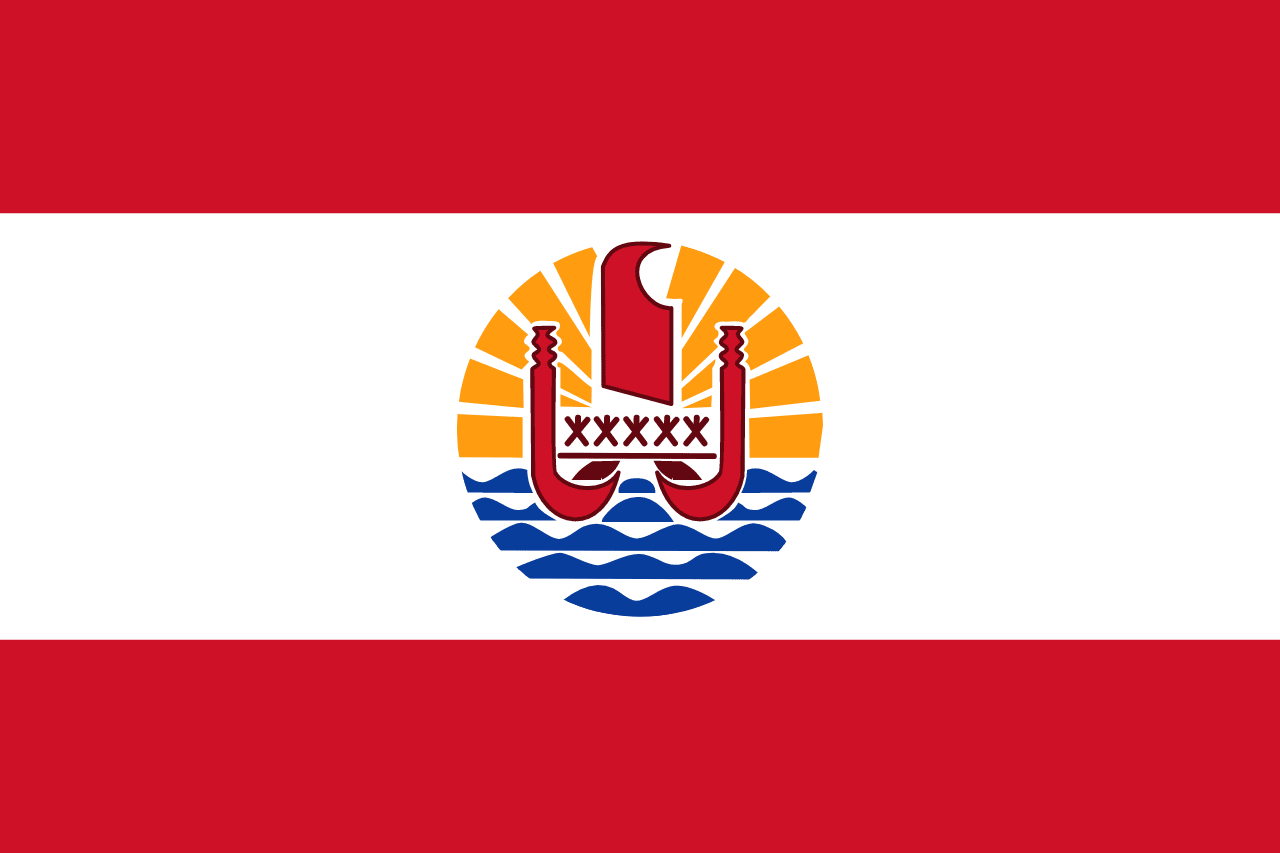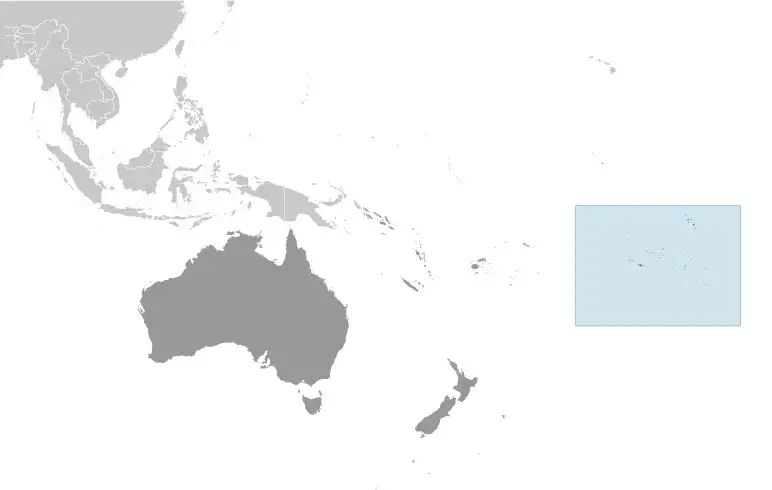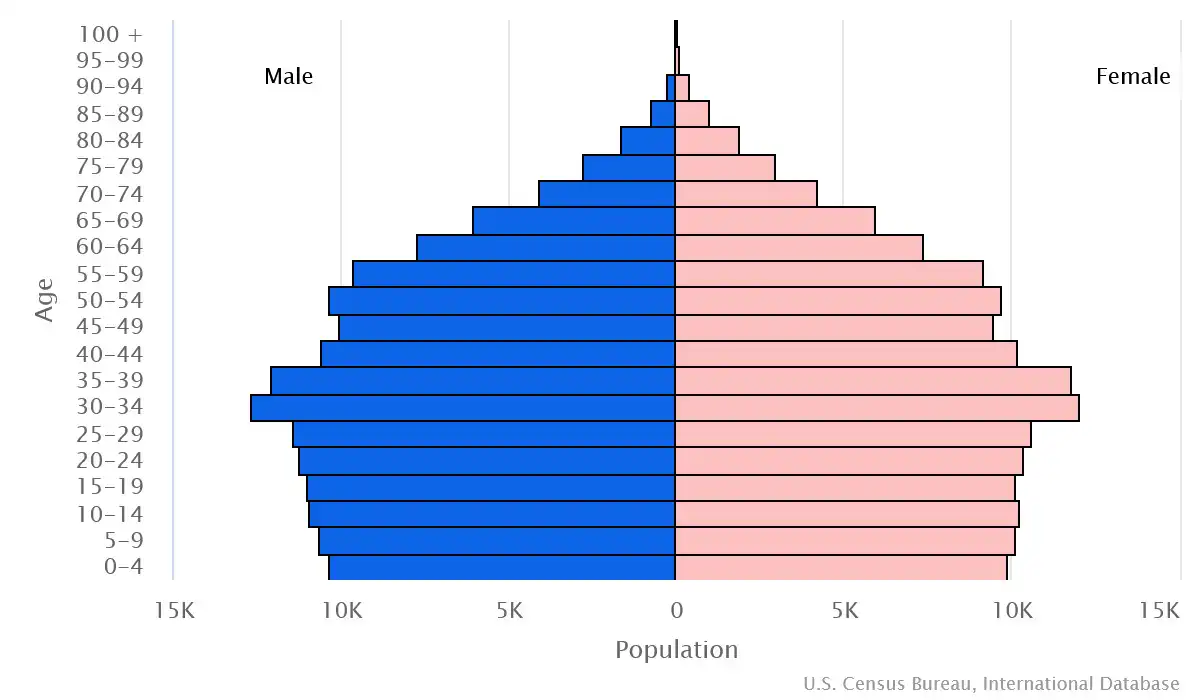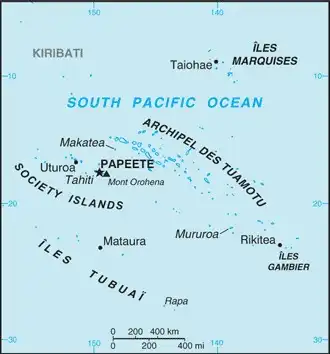
French Polynesia Country Profile
Key Facts of French Polynesia

| Government type: | parliamentary democracy (Assembly of French Polynesia); an overseas collectivity of France |
| Capital: | Papeete (located on Tahiti) |
| Languages: | French (official) 73.5%, Tahitian 20.1%, Marquesan 2.6%, Austral languages 1.2%, Paumotu 1%, other 1.6% (2017 est.) |
French Polynesia Demographic Data
Ethnic Groups in French Polynesia
Religious Groups in French Polynesia
Age pyramid of French Polynesia

French Polynesia Economy Statistics
Economic overview of French Polynesia
small, territorial-island tourism-based economy; large French financing; lower EU import duties; Pacific Islands Forum member; fairly resilient from COVID-19; oil-dependent infrastructure
French Polynesia Real GDP (purchasing power parity) in Billion $
French Polynesia Real GDP per capita in $
French Polynesia's Exports & Imports in million $
Top 5 Import Partnerin 2022 (64%) of French Polynesia
Top 5 Import Commodities in 2022 of French Polynesia
- refined petroleum ⛽
- cars 🚗
- packaged medicine 💊
- beef 🥩
- plastic products ♻️
Top 5 Export Partnerin 2022 (76%) of French Polynesia
Top 5 Export Commodities in 2022 of French Polynesia
- pearls 🦪
- fish 🐟
- aircraft parts ✈️
- coconut oil 🛢️
- electrical power accessories ⚡
Geography of French Polynesia
Map of French Polynesia

Land and Water Distrubtion of French Polynesia
Natural Resources of French Polynesia
- timber 🌲
- fish 🐟
- cobalt 🪙
- hydropower 💧⚡
Climate inFrench Polynesia
tropical, but moderate
History of French Polynesia - a Summary
French Polynesia consists of five archipelagos -- the Austral Islands, the Gambier Islands, the Marquesas Islands, the Society Islands, and the Tuamotu Archipelago. The Marquesas were first settled around 200 B.C. and the Society Islands around A.D. 300. Raiatea in the Society Islands became a center for religion and culture. Exploration of the other islands emanated from Raiatea, and by 1000, there were small permanent settlements in all the island groups. Ferdinand MAGELLAN was the first European to see the islands of French Polynesia in 1520. In 1767, British explorer Samuel WALLIS was the first European to visit Tahiti, followed by French navigator Louis Antoine de BOUGAINVILLE in 1768 and British explorer James COOK in 1769. King POMARE I united Tahiti and surrounding islands into the Kingdom of Tahiti in 1788. Protestant missionaries arrived in 1797, and POMARE I’s successor converted in the 1810s, along with most Tahitians. In the 1830s, Queen POMARE IV refused to allow French Catholic missionaries to operate, leading France to declare a protectorate over Tahiti and fight the French-Tahitian War of the 1840s in an attempt to annex the islands.
In 1880, King POMARE V ceded Tahiti and its possessions to France, changing its status into a colony. France then claimed the Gambier Islands and Tuamotu Archipelago and by 1901 had incorporated all five island groups into its establishments in Oceania. A Tahitian nationalist movement formed in 1940, leading France to grant French citizenship to the islanders in 1946 and change it to an overseas territory. In 1957, the islands’ name was changed to French Polynesia, and the following year, 64% of voters chose to stay part of France when they approved a new constitution. Uninhabited Mururoa Atoll was established as a French nuclear test site in 1962, and tests were conducted between 1966 and 1992 (underground beginning in 1975). France also conducted tests at Fangataufa Atoll, including its last nuclear test in 1996.
France granted French Polynesia partial internal autonomy in 1977 and expanded autonomy in 1984. French Polynesia was converted into an overseas collectivity in 2003 and renamed an overseas territory in 2004. Pro-independence politicians won a surprise majority in local elections that same year, but in subsequent elections, they have been relegated to a vocal minority. In 2013, French Polynesia was relisted on the UN List of Non-Self-Governing Territories.
